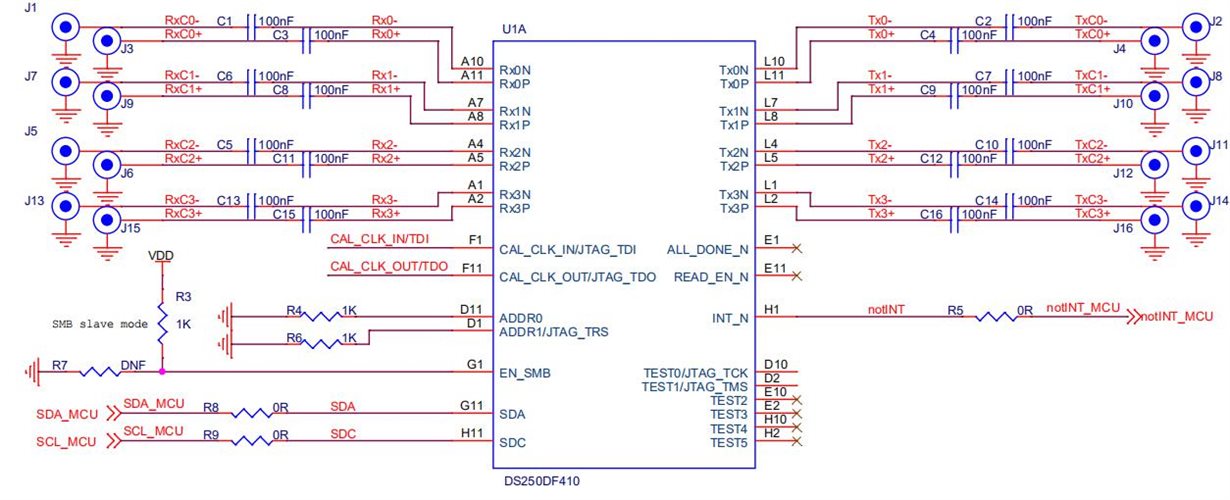Hi, I'm using DS250DF410 retimer now, the schematics of IO signals attached. the I2C controller is STM32 mcu, the current issue are:
1. there is 25MHz clk supplied at pin Cal_Clk_In, but the Cal_Clk_Out Pin is 2.5V DC signal when power up, I don't know it's correct or not;
2. I could read global register and got device ID is 0x0E, version ID is 0x31 and device ID is 0x10, that means register read operation should work, but the register 0xFF read value is 0x00, I don't know this default value is correct or not;
3. I tried to write the 0xFF register, i.e., 0x01 to enable channel, but the read back value is still 0x00, I tried write other RW registers, all results shows write operation failed, I cannot change the default value, but from the scope, I saw there is ACK after the write byte operation. is there any other process needed before write register?
thanks in advance!


